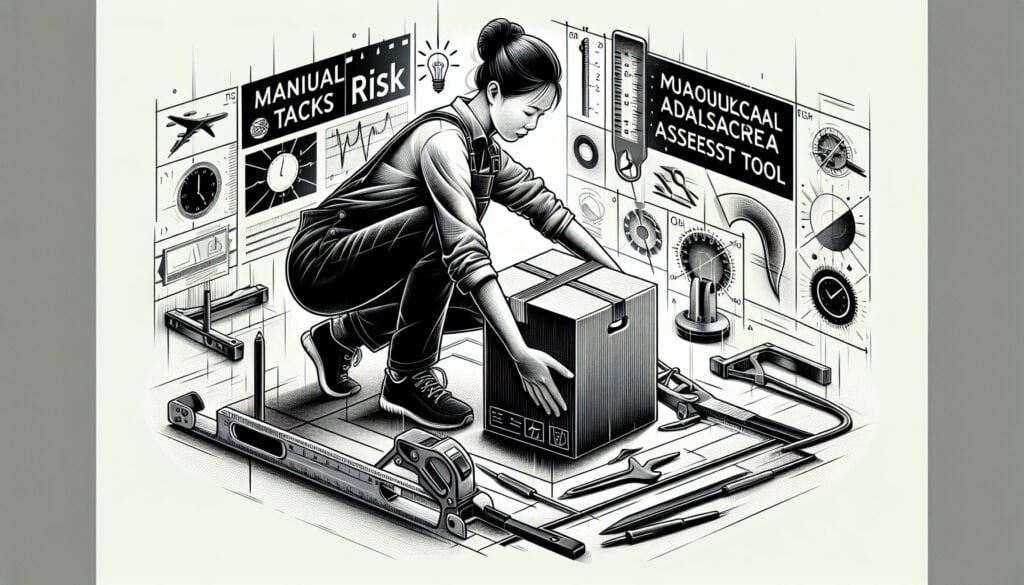To assess the risk of musculoskeletal disorders from various manual tasks.
- Methodologies: Engineering, Quality
ManTRA (Manual Tasks Risk Assessment Tool)

ManTRA (Manual Tasks Risk Assessment Tool)
- Continuous Improvement, Ergonomics, Human Factors, Human Factors Engineering (HFE), Process Improvement, Quality Management, Risk Analysis, Risk Management, Safety
Objective:
How it’s used:
- An ergonomic risk assessment tool that evaluates the level of risk associated with a wide range of manual tasks, not just lifting. It considers factors like posture, force, and repetition to provide a comprehensive risk score.
Pros
- Comprehensive tool covering a variety of manual tasks; Provides a structured approach to risk assessment.
Cons
- Can be complex to use and may require training; The assessment can be time-consuming.
Categories:
- Ergonomics, Risk Management
Best for:
- Conducting a detailed ergonomic assessment of manual jobs with varied and complex tasks.
ManTRA serves a wide range of industries, including manufacturing, healthcare, logistics, and construction, where workers frequently engage in manual tasks that pose ergonomic risks. The tool is applicable during the planning and implementation phases of work procedures, allowing organizations to integrate ergonomic assessments into the design of workspaces and practices. It is initiated by safety professionals, ergonomists, or health and safety managers, but should actively involve workers who perform the tasks being assessed, as their feedback can provide invaluable information regarding the practical challenges they face. ManTRA assesses multiple aspects of manual tasks, such as body posture, repetitive actions, and force exertion, which helps organizations identify high-risk activities and implement targeted interventions to mitigate risks. By providing a comprehensive risk score, organizations can prioritize actions based on severity and likelihood, ensuring that the most significant issues are addressed first. This methodology not only aids in compliance with occupational health and safety regulations but also contributes to improved worker well-being, reduced injury rates, lower absenteeism, and higher productivity, reflecting positively on operational efficiency and employee morale. Its structured approach also facilitates comparisons across different tasks and roles, enabling standardized assessments that can guide policy formation and foster continuous improvement in workplace ergonomics. This versatility makes ManTRA an invaluable resource for organizations striving to enhance worker safety and optimize task design.
Key steps of this methodology
- Identify the tasks being assessed, ensuring a focus on a wide range of manual activities.
- Analyze the postures required for each task, noting awkward positions that may contribute to risk.
- Evaluate the forces exerted during tasks, determining the level of physical load being handled.
- Examine the frequency and duration of activities performed, particularly regarding repetitive motions.
- Assess the work environment to identify any factors that may exacerbate ergonomic risks.
- Combine the findings to calculate an overall risk score, indicating the level of ergonomic risk for each task.
- Develop strategies to mitigate identified risks, including redesigning tasks or providing ergonomic aids.
- Implement changes and monitor task performance to ensure ongoing compliance with ergonomic standards.
Pro Tips
- Incorporate user feedback into the risk assessment process to validate findings and tailor interventions effectively.
- Utilize advanced motion capture technology to capture real-time posture and movement data, enhancing accuracy in evaluations.
- Implement iterative testing post-intervention to measure the effectiveness of ergonomic adaptations and ensure continuous improvement.
To read and compare several methodologies, we recommend the
> Extensive Methodologies Repository <
together with the 400+ other methodologies.
Your comments on this methodology or additional info are welcome on the comment section below ↓ , so as any engineering-related ideas or links.
Historical Context
1986
(if date is unknown or not relevant, e.g. "fluid mechanics", a rounded estimation of its notable emergence is provided)

Related Posts
Monte Carlo Simulation
Model-Based Testing
Model Checking
Mixed Methods Research
Mistake Proofing (Poka-Yoke)
Mission Profile Testing